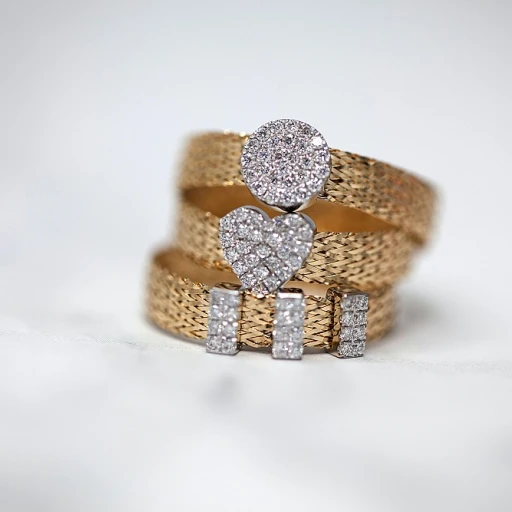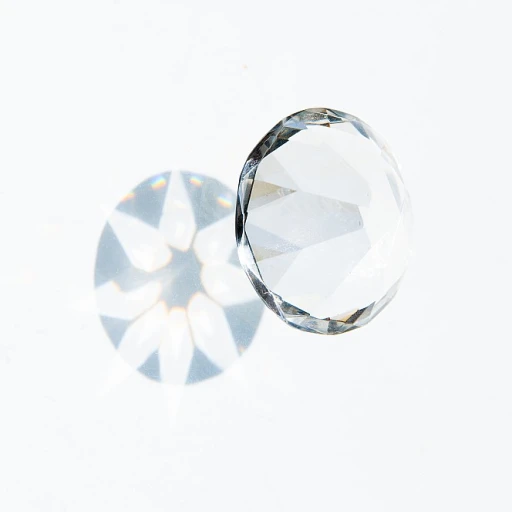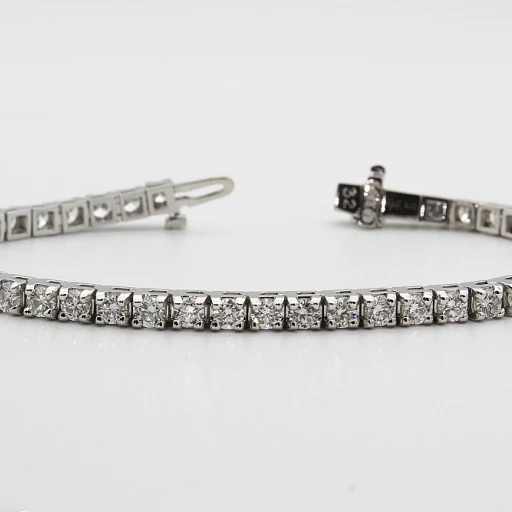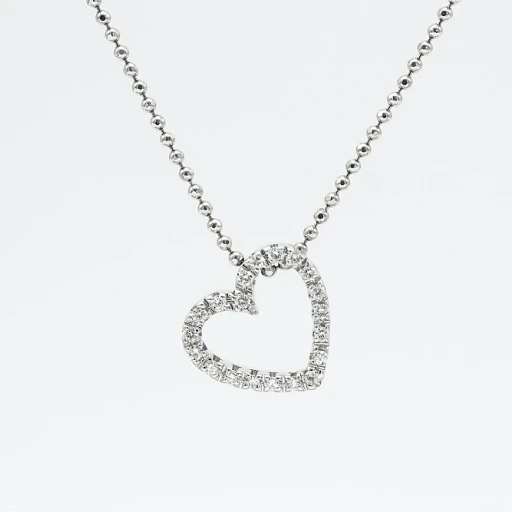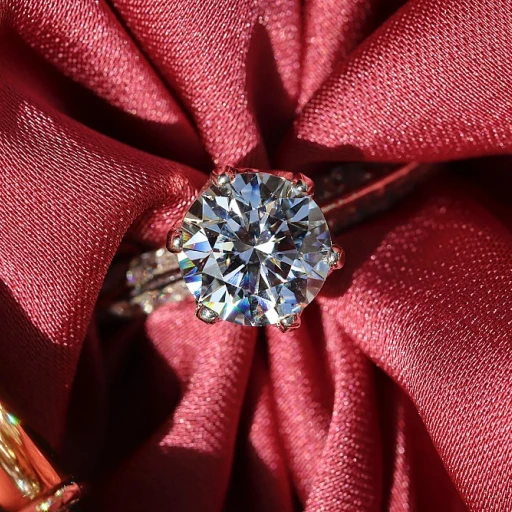
The History of Hallmarks
The Origins of Jewelry Hallmarks
Jewelry hallmarks have a rich history that dates back centuries, serving as a testament to the artistry and authenticity of fine jewelry. These marks, often found on pieces made of precious metals like gold and silver, were initially introduced as a means to protect consumers and ensure the purity of the metal content in their jewelry. The practice of hallmarking can be traced back to the 13th century, when the first assay offices were established to regulate the quality of gold and silver.
As the demand for jewelry grew, so did the need for a standardized system to verify the purity of metals. This led to the development of hallmarking standards, which have evolved over time to include various symbols, letters, and maker marks. These marks not only indicate the metal purity but also provide insights into the piece's origin and authenticity.
Throughout history, different regions have adopted their own hallmarking practices, reflecting local traditions and regulations. For instance, the art deco period saw a surge in unique and intricate designs, often accompanied by distinctive hallmarks that are now considered vintage treasures. Understanding these historical marks can offer valuable insights into the craftsmanship and heritage of a piece, making it easier to identify and appreciate the true value of vintage jewelry.
For those interested in exploring the art of hallmarking further, a deep dive into the art of hallmarking can provide a more comprehensive understanding of its significance in the world of fine jewelry.
Decoding Hallmarks: What They Mean
Understanding Jewelry Hallmarks: Your Guide to Markings and Their Meanings
Jewelry hallmarks, those tiny symbols and letters often overlooked, play a crucial role in identifying the quality and authenticity of fine jewelry pieces. Understanding these markings can offer invaluable insights into the metal content and overall craftsmanship of your treasured gold or silver ring. Firstly, jewelry hallmarks provide a clear indication of metal purity. Whether it’s gold hallmarks denoting the "purity mark" or "metal purity" of your precious piece, or identifying sterling silver with the traditional markings, these symbols ensure buyers and sellers both have clear, trustable indicators of what they are dealing with. An interesting point lies in the "maker marks" or "maker's trademarks" found on vintage jewelry, including those from the art deco era. These markings, often bearing the designer or the "assay office" stamps, are often signs of high-quality craftsmanship and can significantly influence the "sale price" of jewelry. Furthermore, you'll encounter various "symbols letters" and "purity marks" that serve to distinguish between different "metals". For example, "platinum palladium" markings show an alloyed mix tailored for durability, whereas distinguishing between "gold silver" and "pure gold" items relies heavily on these hallmark cues. Decoding these "markings" can sometimes be straightforward, but in many cases, the complexity of the "hallmarking" system means expertise is required for accurate interpretation. For those wishing to dive deeper into the world of hallmarking, the "Cracking the Code: A Comprehensive Hallmarking Guide for the Fine Jewelry Owner" offers a thorough exploration of this intricate topic. These hallmark clues aren't just academic; they are vital tools in confirming "authenticity" of a piece, distinguishing "precious metal" quality, and avoiding "fake hallmarks". With this understanding, whether navigating the common "hallmarking standards" worldwide or simply examining your own jewelry collection for signs of "authenticity", you are better equipped to appreciate the depth of value that comes with each mark on your precious items. Stay observant and informed; every mark tells a story about its "precious metals" legacy.The Role of Hallmarks in Authenticity
The Integral Role of Hallmarks in Establishing Jewelry Authenticity
Understanding and recognizing the significance of hallmarks is crucial for any fine jewelry owner. These tiny yet noteworthy symbols engraved on your cherished pieces are more than just decorative elements; they serve as a testament to the jewelry's authenticity and precious metal content. Beyond giving insights into the metal purity, hallmarks are integral in verifying the lineage and origin of a piece. For instance, a hallmark on a gold ring or silver necklace not only assures you of its gold or silver content but also provides information on where and by whom it was crafted. This ensures that what you have in your possession meets the standards promised by the seller, thus influencing the sale price of valuable items. Moreover, hallmarks help differentiate between genuine and counterfeit pieces, protecting your investments in the long run. When buying gold, silver, or other precious metals, hallmarked jewelry assures the buyer of the item's authenticity, making these markings indispensable for serious and novice collectors alike. In a market filled with replicas and forgeries, the credibility that jewelry hallmarks bring cannot be overstated. From identifying whether a gold piece truly reflects gold purity standards to confirming if a vintage art deco silver ring is indeed sterling silver, these markings play a pivotal role. For in-depth insights and examples of hallmarking's importance, feel free to explore more about mastering the mark in authenticating fine jewelry. As you delve into the world of hallmarks, remember: these markings are not arbitrary; they are backed by assay offices that uphold the integrity of hallmarking standards worldwide. This is why understanding them grants you not just appreciation but also the assurance of value and quality in your coveted collection.Common Hallmarking Standards Worldwide
Worldwide Standards: A Global Perspective on Hallmarks
In the intricate world of fine jewelry, understanding the diversity of hallmarking standards is crucial for any collector or enthusiast. Hallmarks, those tiny imprints on your precious metal pieces, serve as symbols of authenticity, purity, and origin. Despite their miniature size, these marks carry a significant weight, influencing everything from sale price to the perceived value of your gold and silver treasures.
Globally, hallmarking standards vary greatly, reflecting each region's rich tradition and regulatory environment.
- United Kingdom: In the UK, hallmarking is governed by stringent rules set by the Assay Office. The UK uses a detailed system that includes purity marks, assay office marks, and date letters. The system ensures that each piece contains the stated precious metal content.
- United States: Unlike some countries with centralized hallmarking, in the US, purity and authenticity are indicated by individual maker marks. While sterling silver and gold jewelry are often marked, there is no centralized body conducting hallmarking.
- Italy: Renowned for its exquisite jewelry, Italy requires every piece of fine jewelry to be hallmarked with a maker's registration number, along with the mark indicating the metal purity. Italian jewelry is celebrated for its high-quality craftsmanship.
- India: As one of the leading markets for gold, India has recently mandated hallmarking for gold jewelry. The BIS (Bureau of Indian Standards) oversees the process, ensuring adherence to purity standards.
- France: The French touch of elegance extends to its hallmarking system, which includes the eagle's head for gold and the Minerva head for sterling silver, indicating the purity of the metal.
The diversity in hallmarking practices across regions underscores not only the cultural distinctions but also the emphasis placed on assuring consumers of a piece's quality and legitimacy. Understanding these marks aids not just in verifying authenticity but also in ensuring the fidelity of the metal purity claims.
Every hallmark carries a story, a legacy entrenched in the piece's journey from conception to shimmering reality. As you delve into the realm of hallmarks, you partake in the rich saga of jewelry craftsmanship, a testament to humanity's enduring allure to adornment and excellence.
Identifying Fake Hallmarks
Unveiling Genuine Jewelry: Recognizing Counterfeit Hallmarks
In the delicate world of fine jewelry, hallmarks play a crucial role in establishing authenticity, including metal purity and artisanship credentials. Yet, as the value of jewelry rises, the proliferation of counterfeit hallmarks also becomes a concern. Understanding how to distinguish genuine markings from fakes ensures that your investment retains its legitimacy and value. Spotting fake hallmarks doesn't just require a keen eye but also demands knowledge about what makes a hallmark credible. Here is how you can better identify false marks in your precious pieces:- Consistency in Markings: Authenticity in jewelry hallmarks, particularly those on gold, silver, or platinum, depends on their clarity and consistency. Legitimate markings are usually even, easily legible, and resistant to wear. If your piece's mark looks imprecise or unevenly imprinted, it might warrant further analysis.
- Verify Metal Content: Hallmarks specifically denote the purity of metal or metals used in the piece. For instance, gold hallmarks will reflect its purity as 14k, 18k, or 22k as per standards like the assay office. Ensuring that the metal content aligns with these symbols letters can catch discrepancies early. If gold appears too good to be true, check those purity marks.
- Cross-checking Maker Marks: Each maker mark or jewel stamp signifies a unique creator or crafting house. Some vintage jewelry might feature marks from well-regarded historic jewelry houses which can be authenticated against records for credibility. Art deco pieces or sterling silver items might carry maker marks registered in common databases.
- Examine Uncommon Symbols: When examining your ring, bracelet, or necklace, look out for symbols that don’t apply to the common hallmarking standards worldwide. Fake engravings might include random letters or fictitious symbols meant to deceive.
- Consider the Style and Age: Different eras in jewelry produce unique styles of markings. Gold silver jewelry from earlier periods or art deco styles might have hallmarks that are not as bold or detailed as contemporary pieces, yet their styling must adhere to the period's hallmarking practice.

